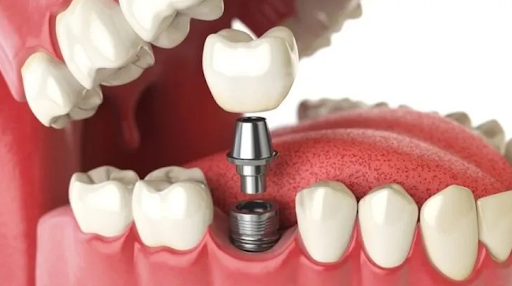What is a Personalized Dental Implant?
The implant consists of two main parts. The first is a screw tooth that is placed in the jawbone and imitates the tooth root. The second part is the upper part, which we call the abutment, which is screwed into the implant. Abutments are the superstructure parts of the implant on which we make veneered teeth by giving them an abraded tooth form.
In general, implant brands produce standard abutments in various diameters and lengths. However, these various diameters and lengths cannot exactly imitate the shape of the gums, which differ in detail for each person.
Personalized abutments are personalized implant abutments produced from titanium to maximize aesthetics, designed with 3D special programs according to the angles of the implants, the patient’s gum shape and relationship with the surrounding tissues, and the tooth to be crowned.
Advantages
- They provide a more aesthetic appearance because they are designed to suit the patient’s gum shape and structure.
- The coating, which is produced according to the shape of the gums, prevents the accumulation of unwanted substances such as food residues under the teeth and makes cleaning the teeth easier.
- Since it is made according to the shape of the tooth, it ensures balanced distribution of forces and prolongs the screw thread’s chance of success and life.
Disadvantages
- Their costs are slightly higher than standard implants.
Scope of application
Personalized implants can be applied to all patients who can have standard implants.
Surgical Stage
The surgical implant placement phase is the same as standard screw dental treatment. For details, you can review the implant treatment section. The main difference occurs when veneering is applied to the artificial tooth.
Prosthesis Stage
After taking measurements on the implant or more than one implant, instead of trying to adapt a suitable fabricated abutment to the tooth gap, a special abutment is made for that person with a cad-cam system, taking into account all the characteristics of the area where the tooth gap is located, according to the shape and thickness of the gum where the tooth gap is located. .
- X-rays are taken to check the level of fusion of the implants with the bone.
- Small holes are made on the gum and gum shapers are screwed into the implant. In this process, the use of an implant detector makes it easier to determine the exact location of the implant and also allows measurements to be taken in the same session.
- In cases where the gums are opened by open surgery and a gum shaper is placed, you may wait 4 to 5 days to take measurements.
- According to the measurements taken in the first session, abutment specific to the person’s gums and mouth structure is made in the laboratory.
- Personally prepared abutments are sent to the laboratory where the infrastructure is prepared and the infrastructure (metal, zirconium, etc.) is prepared in accordance with the abutments.
- In the session following the measurement, a personalized abutment and infrastructure rehearsal is performed. Measurements are taken for porcelain.
- A porcelain rehearsal is performed in the session following the infrastructure rehearsal.
- If there is no problem during the porcelain rehearsal, the teeth are temporarily bonded and used for a while.
- If there is no problem in the use of prosthesis and veneer, permanent bonding is performed. If a problem occurs, necessary corrections are made.
Duration
The duration of the surgical phase in a personalized implant is the same as in standard implant treatment. The prosthesis phase is slightly longer than the standard prosthesis phase, as a titanium upper part is produced specifically for the person’s gums and tooth structure. The prosthesis phase is completed in 5 to 8 days, depending on the case.

